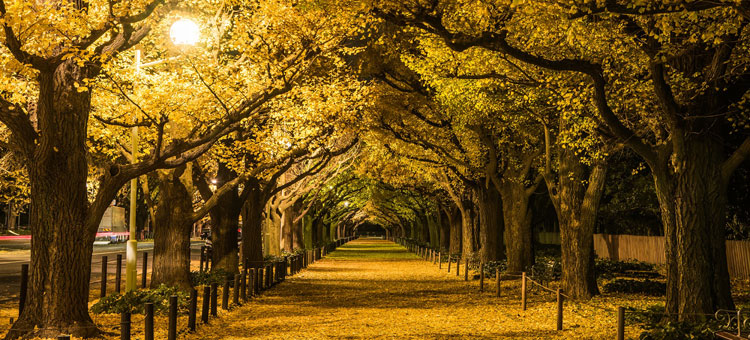Mumbai: Starting mid September till early December, colorful autumn leaves, known as “Koyo” in Japanese, paint the land in the warm hues of red and yellow. As the autumn approaches, the combination of cool weather and striking foliage sights make fall one of the most popular seasons for traveling to Japan. The breathtaking scenery of fiery reds, brilliant scarlets and regal gold by the Japanese maple and ginkgo tree, as well as supporting acts like the Japanese rowan and larch is something one must not miss.
This spectacular transformation of autumn leaves is considered to be one of the most beautiful experiences in the world. Like sakura, koyo dates back to Japan’s history, culture and identity. Since the eighth century, Japanese people have embarked on the annual pilgrimage to mountains, gorges and temples to enjoy this multi-hued phenomenon in autumn. This activity is so culturally ingrained that it has its own term, “Momijigari”. While it literally means to ‘hunt’ the autumn leaves, it actually means to ‘seek out and admire’ them.
From mid September, the koyo front slowly moves southwards from the northern island of Hokkaido until it reaches the lower elevations of central and southern Japan towards the end of November. Whereas, some regions around Tokyo and Kyoto remain colorful till early December. Many visitors and hikers from all over the world go on excursions at the famous koyo spots both in the mountains and cities. If not an adventure lover, you can soak in the panoramic autumn vistas in a mountain hot spring.
There are numerous koyo spots in Japan which one must visit to witness autumn bloom at its best. If in Tokyo, head to the Rikugien Garden, a traditional Japanese garden with the striking autumn views. One should definitely take an overnight trip to Lake Kawaguchi, which is at the base of Mt. Fuji. From this spot you can capture the magnificent Mt. Fuji reflecting in the serene lake waters, with crimson trees dotting the banks and surrounding mountainsides. There is also a daily night show in Rikugien, Tokyo where the trees are illuminated to add atmosphere to your momijigari experience.
Kyoto, the cultural hub of Japan, is also one of the most prominent spot to capture the beauty of autumn foliage. There are ample of gardens and temples, which offer what, are arguably the most spectacular views of the season. One such spot is the Kiyomizudera Temple, which also hosts a light up event that runs from mid-November to late December.
Kamakura in the Kanagawa prefecture is famous for hiking courses dotted with beautiful vistas for the ultimate momijigari experience. Witness the fiery red of the maple leaves at Kakuon-ji Temple and enjoy panoramic views of the autumn foliage at a spot called “Ten-en” hiking course situated at the top of the mountain.
There are lots of festivals which are celebrated during the foliage period, as autumn offers a favorable climate. One of the most famous festivals during this season is the Nagasaki Kunchi Festival, which celebrates the autumn harvest. In Kyushu, from November to May you’ll find the Kingdom of Lights , a spectacular display of 10 million lights that illuminates the Dutch-themed Huis Ten Bosch theme park.
These unique and exceptional views during the autumn foliage season will surprise anyone who is traveling to Japan. Japan in fact witnessed 13,200 Indian tourist arrivals in July, posting 6.2 per cent month-on-month hike. Moreover, 106,200 Indians visited Japan from January-July, posting a phenomenal 14.3 per cent year-on-year hike.
The Japan National Tourism Organization (JNTO) was founded in 1964 with the mission of enticing foreign travelers to Japan. Affiliated with the Japan Tourism Agency of the Ministry of Land, Infrastructure, Transport and Tourism, JNTO has effectively functioned as the Japanese government bureau of tourism. It has a total of 21 tourism-promotion-oriented offices across the world, and a large network of suppliers for tourism and event services in Japan. The Japan Convention Bureau (JCB), within JNTO, gathers professionals dedicated to attracting international conferences and incentive tours to Japan, located in 6 strategic offices.
For more information: https://www.japan.travel/en/guide/autumn-guide/
JNTO Website: https://www.japan.travel/en/in/






